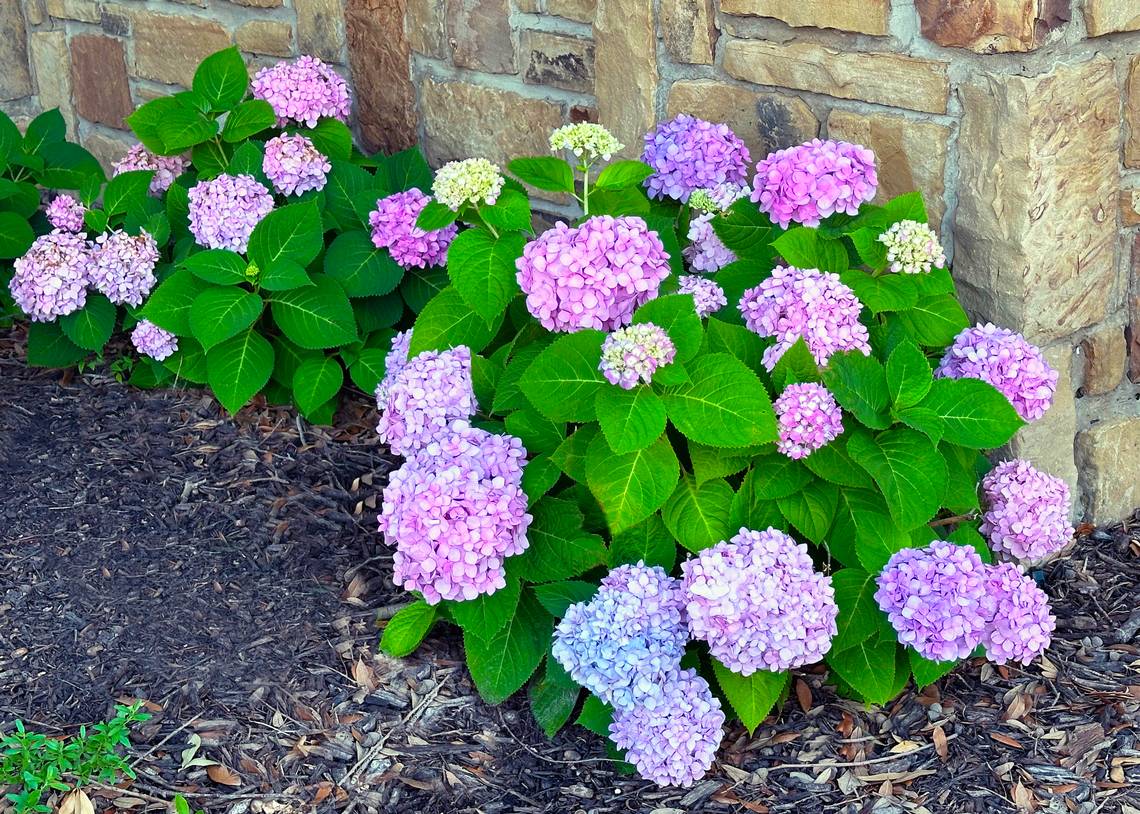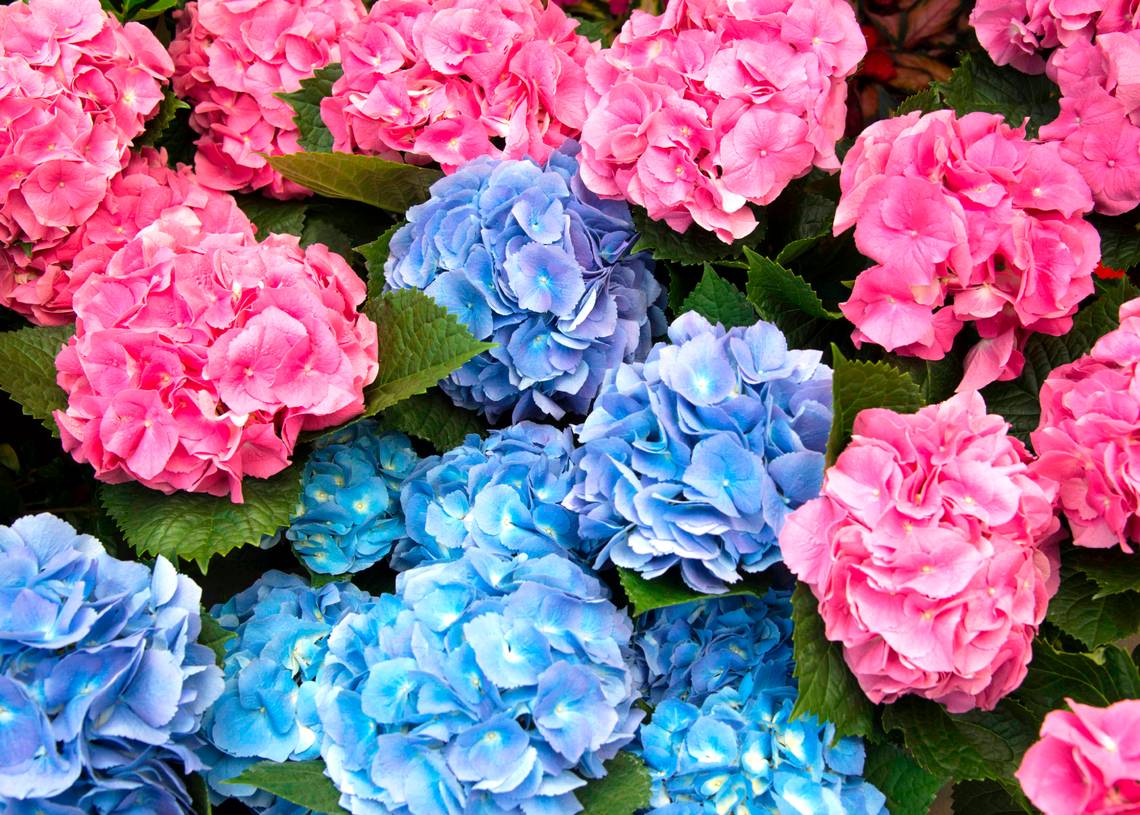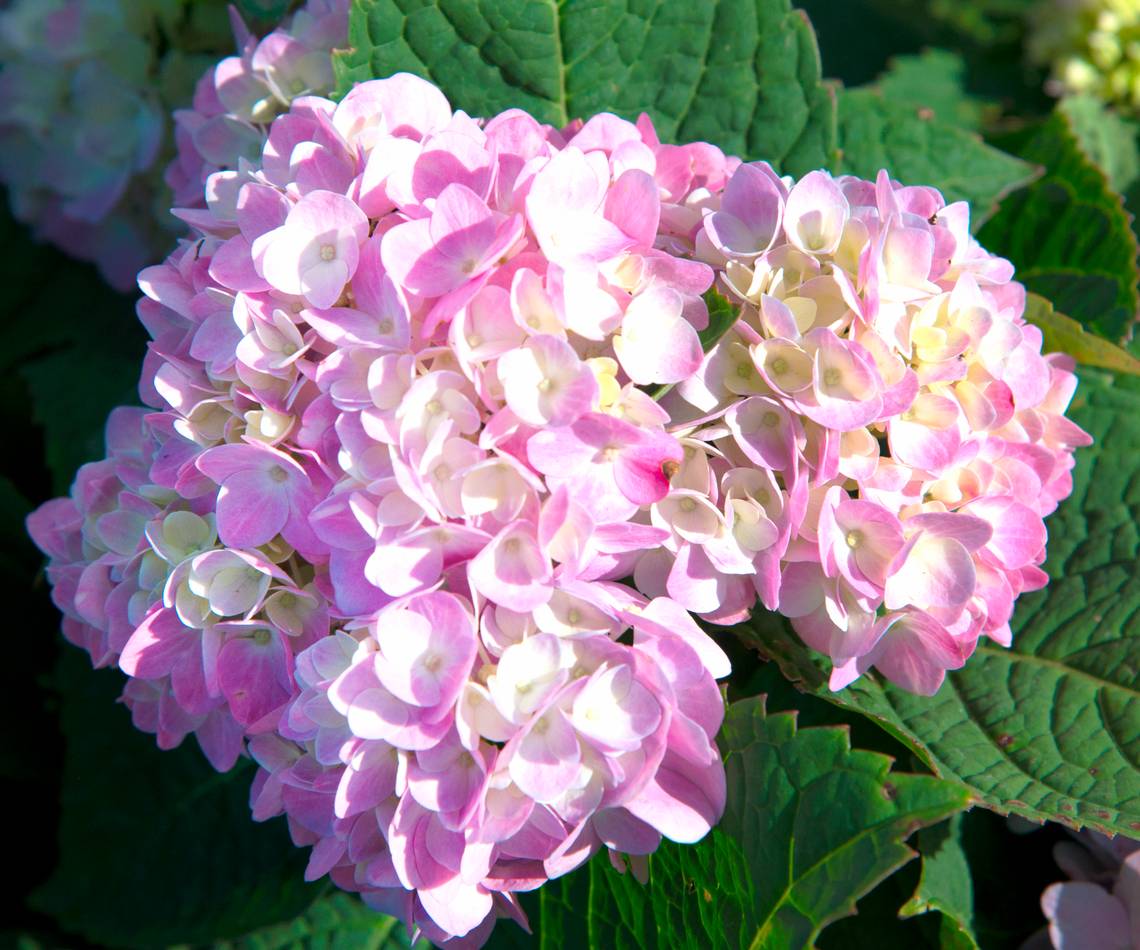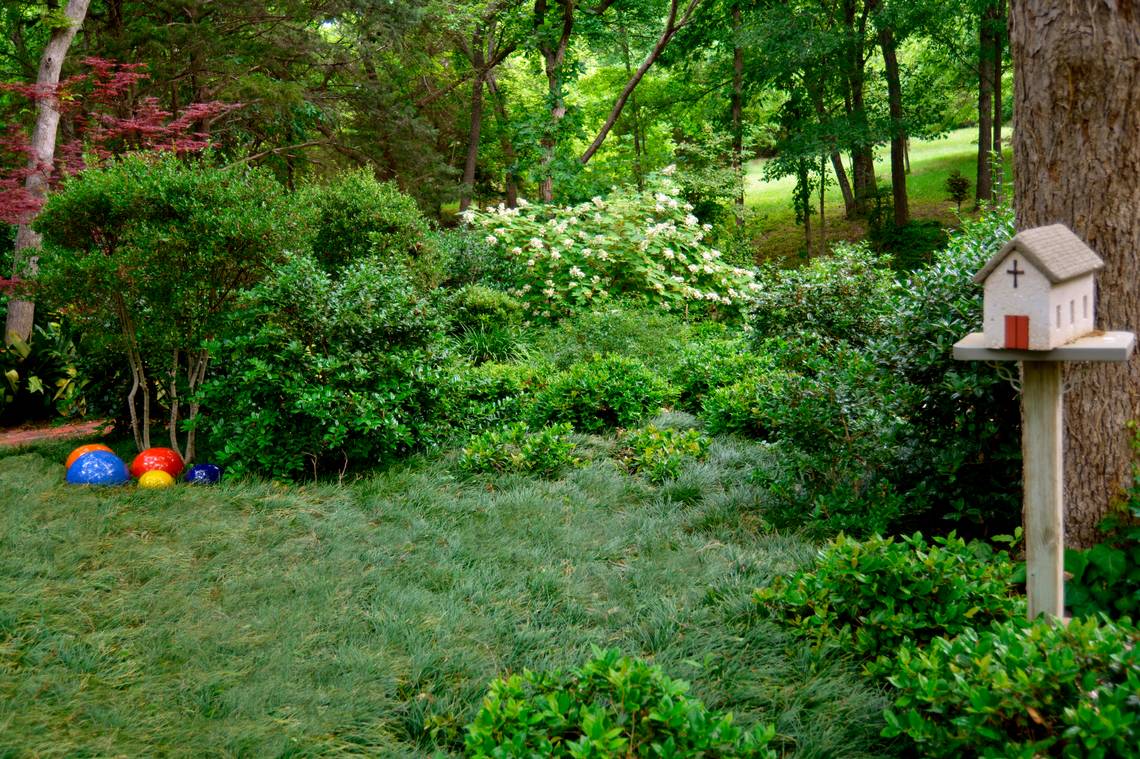It's prime time for these plants, and they deserve a spot in your landscape
There's a traffic jam in the driveway - great plants freshly home from the garden center, all awaiting a chance to prove their merit in your very own landscape. This is their prime time. Let me pick out one of the favorites and spend a few moments talking about it.
Hydrangeas . Everybody loves this potted plant/shade plant for the landscape. Its flamboyant flowerheads can be as big as a volleyball and they can trick you into thinking they're magical from one season to the next as they go from bright pink to royal blue. Here's what you'll need to know.
These are properly known as bigleaf hydrangeas ( Hydrangea macrophylla). We commoners use the term "mophead" hydrangeas to refer to their large masses of floral parts.

These plants do best in morning sun until 10 or 10:30, then shade the balance of the day. As stated, they have large leaves, and those leaves pout and wilt when they're hit by hot sun in the summer. Given very much of that and they'll start turning brown around their outer edges and leaf tips. Logically, you want to keep them evenly moist, but you must not let them stay soggy. That would tell an observant gardener to grow them in raised beds to ensure good drainage and then to keep the garden hose handy.
But what is that planting soil, and why does it matter more with mophead hydrangeas that with almost any other type of garden shrub?
Hydrangeas demand that their soil be kept moist, so that implies a high content of organic matter (compost, shredded pine bark mulch, sphagnum peat moss).
Concurrently, the pH of the planting medium determines the color of the floral bracts on mophead hydrangeas. Acidic soils (with a pH lower than 6.0) will produce plants with blue to lavender-blue blooms. Soils with a pH of 7.0 or greater (alkaline) will produce flowers that are pink to light purple. If you water them repeatedly with irrigation water from Metroplex tap water, its pH is higher than our native soils, so it is extremely alkaline, and that will gradually shift the planting medium toward alkaline as well.
You may be able to impact the soil's pH somewhat, but you'll have to be vigilant to accomplish significant changes over a period of time. Nurseries sell aluminum sulfate to lower the pH of our alkaline soil but be forewarned that you're probably not going to achieve the brilliant sky-blue tones you'll see on hydrangeas in the red acidic soils of the East Texas Piney Woods. You may be well served to be happy with the bright pinks we get in our alkaline soils. Even then you're going to need to cope with occasional iron deficiency in the foliage brought on by the same soil pH and resulting insolubility of iron in those conditions.

Any pruning and reshaping you do of your mophead hydrangeas should be done soon after they finish blooming. Remove only dead or weakened stems. Reshape the plants lightly. These plants bloom on old growth, so it's important that you not cut them back severely at any time, also that you give them late summer, fall, and winter to start preparing for spring bloom.
Mophead hydrangeas are marginally winter-hardy in North Central Texas. If severe cold is forecast, pile straw or fallen tree leaves up around their stems and cover them with frost cloth bound tightly in place. Leave them covered for weeks if needed. They'll be just fine.
What plants look and grow best alongside your mophead hydrangeas? Let's concentrate on other plants that need the same kind of lighting and bed prep. That will let them pop off the page. The list includes Japanese maples, dogwoods, aucubas, mahonias, hostas, ferns, hellebores, summer phlox, ajuga, colocasias, oxalis, cast iron plants (aspidistras), cleyeras, and ‘Texas Gold' columbines, among many others.
To finish, let's give a shoutout to the mopheads' big sister, oakleaf hydrangeas ( Hydrangea quercifolia ). As big sisters go, these are the "tough" ones. They're our perfectly woody landscaping shrubs that stand up to all the abuse a Texan can throw at it. They grow successfully from the Gulf Coast to the Red River and north to Canada, from I-35W all the way east to the Atlantic, and they're completely woody. They grow to be spreading landscape shrubs 3 or 4 feet tall by 4 or 5 feet wide, all the way to double that size, depending on the variety. Their leaves can be as large as dinner plates, dark green all summer and deep crimson red in late fall. They bring bold stemmy texture to the dormant garden in winter.


Post a Comment